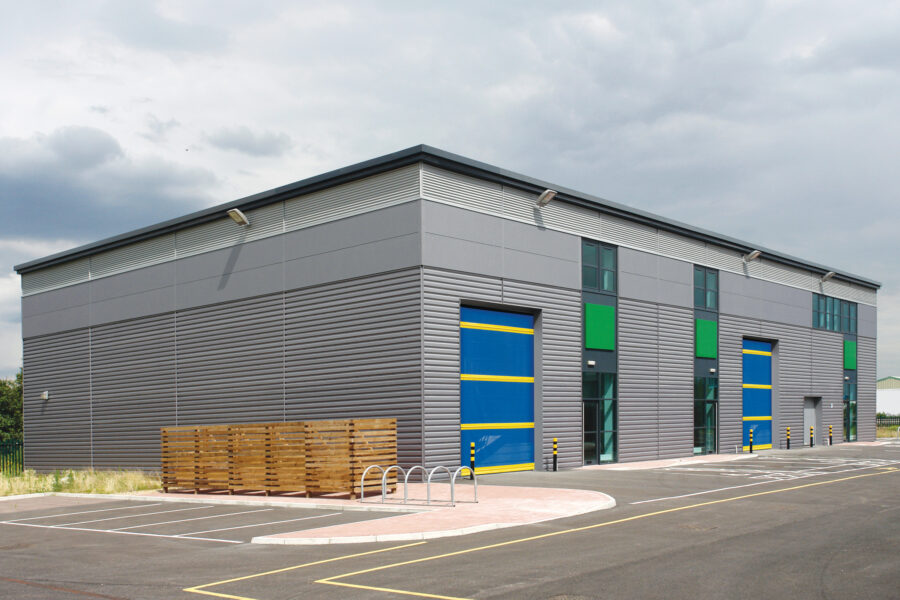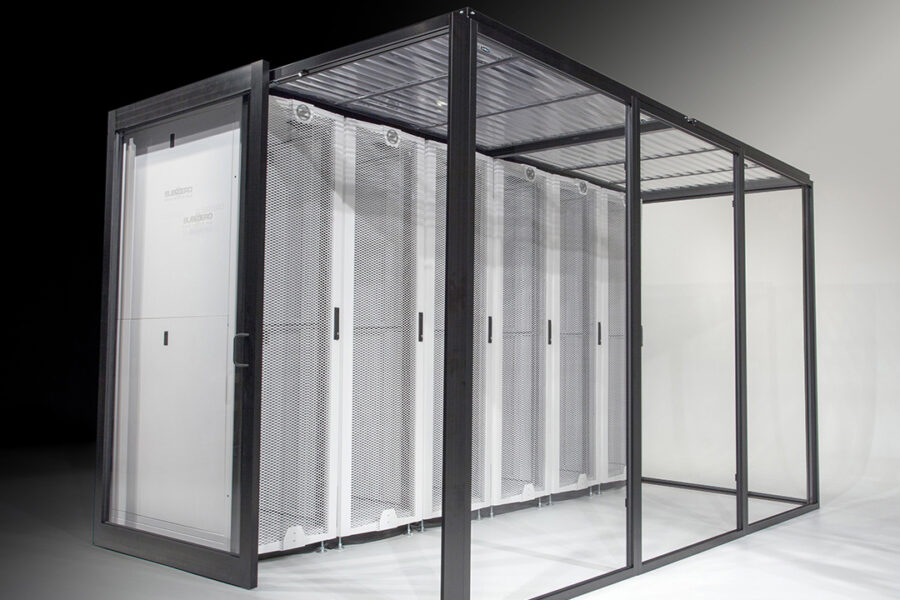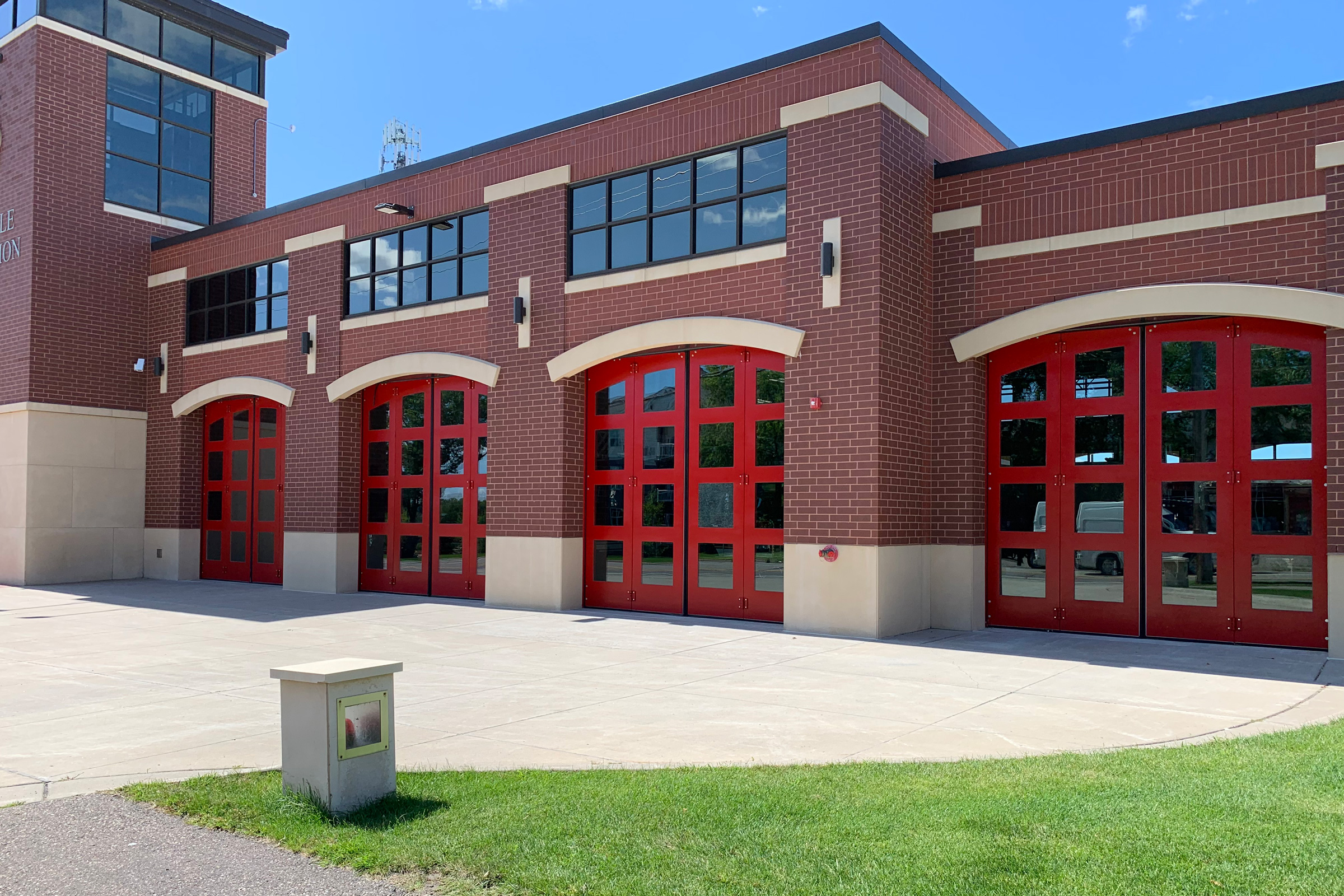Story at a glance:
- Senneca Holdings is revolutionizing the door industry with sustainable, energy-efficient solutions that cater to diverse needs.
- The Enviro-Line EcoAccess door, made from recycled high-density polyethylene, is durable and corrosion-resistant—reducing costs and material usage with a longer lifespan.
Doors are one of those elements of architecture and design that are so ubiquitous that their importance can sometimes be overlooked. However, it’s that very ubiquity that makes specifying and installing the correct door so important. Doors play vital roles in a number of settings—including restaurants, hospitals, and data centers, according to Rick Paterni, vice president of marketing and product management at Senneca Holdings.
Selecting the correct door can allow customers to improve energy efficiency and reduce their material footprint. As such, there are many factors architects and designers should consider when specifying a door for their application. Senneca Holdings considers itself a consulting partner in this process. “Customers come to us with their applications, and we guide them to a solution tailored to their specific industry,” Paterni says. “By leveraging our expertise in industry requirements, codes, and best practices, we aim to provide the most suitable solutions for their clients’ applications. This approach helps ensure customers receive effective and compliant solutions that meet their unique needs.”
Specifying the Right Door Can Improve Energy Efficiency

Chase/TMI’s Screen-Pro Roll-Up Bug Screens are an economical and ideal solution for screening out bugs, birds, and other unwanted pests from industrial projects. Photo courtesy of Senneca Holdings
When it comes to sustainability goals, door selection can have a multitude of impacts. For instance, the large cold storage units used to keep food fresh in restaurants and supermarkets require that doors be designed with high-quality insulation materials to ensure an effective thermal barrier between the refrigerated interior and the external environment. Not only does this ensure food remains at a safe temperature, preventing spoilage, but it can also improve energy efficiency and cuts costs by preventing external heat from entering the refrigeration unit.
Similarly, data centers provide another example of the outsized role doors may play in temperature regulation and energy efficiency. Data centers could account for 32% of the US’ power consumption by 2026, according to the International Energy Agency. As a result, even small energy efficiency gains in these facilities could have a significant impact. The large amount of heat produced by servers in these facilities is typically regulated via a cooling cycle that makes use of hot and cold aisles. Effectively separating these aisles with the proper doors is essential to airflow management and can greatly reduce energy consumption.
“We offer multifaceted savings for our clients. We reduce waste by addressing spoilage caused by high temperatures while simultaneously optimizing energy usage in refrigeration, thus providing cost savings.” Paterni says. “The same goes for data centers. What we do is design systems that reduce heat and keep things running cool and efficient.”
Reducing Material Footprint with the EcoAccess Door

The Enviro-Line EcoAccess door is made from recycled high-density polyethylene and is durable and corrosion-resistant. Photo courtesy of Senneca Holdings
One of Senneca’s newest products is its Enviro-Line EcoAccess door—made entirely of recycled high-density polyethylene (HDPE), a high durability plastic. To facilitate more reuse Senneca operates buy-back and shipping programs with vendors to allow them to reclaim the materials. Paterni says the increasingly stringent sustainability targets of Senneca’s customer-base was the impetus for the EcoAccess door.
“We prioritize partnerships with our customers by aligning and assisting in achieving their sustainability targets,” he says. “Senneca Holdings provides tailored solutions that not only address clients’ immediate challenges but contribute to their broader sustainability objectives. It reflects a customer-centric mindset aimed at fostering long-term relationships built on mutual success and shared values.”
Being built from recycled materials allows the EcoAccess door to reduce a facility’s material footprint, and it also boasts other benefits. For instance, it features a durable, corrosion-resistant surface with a solid color throughout, which ensures it won’t show scratches. Paterni says this further reduces costs and material usage up and down the supply chain by reducing the need for additional materials like paint, lowering labor costs, and eliminating the consumption of electricity that might be utilized if a repair or replacement was needed. Moreover, items and materials that would have otherwise gone into a landfill are instead repurposed for a product that Paterni says has two to three times the lifespan of other doors.
Other Considerations for Specifying the Right Door

Subzero panel walls are seen here. Photo courtesy of Senneca Holdings
While the EcoAccess door is suitable for a number of applications, there are some caveats to consider before making a final decision. Architects and designers should consider the specific needs of the customer and the intended use of the door. It’s essential to account for factors like traffic, energy requirements, and compliance with relevant codes. For its part, Senneca offers presentations and training to help architects make informed decisions.
For instance, a common mistake made in door specification is incorrect sizing due to premature measurements and failing to account for the final finishing of the space. Understanding the application and end-use of the door is crucial for ensuring proper functionality and efficiency.
“We really try to be a consultive solutions provider. We are the experts on doors. If a customer has a problem, we generally have a solution for them. If not, we can direct them to someone who does,” Paterni says. “We supply doors that meet and exceed government regulations and provide the safety, sustainability, and energy savings that customers want.”


